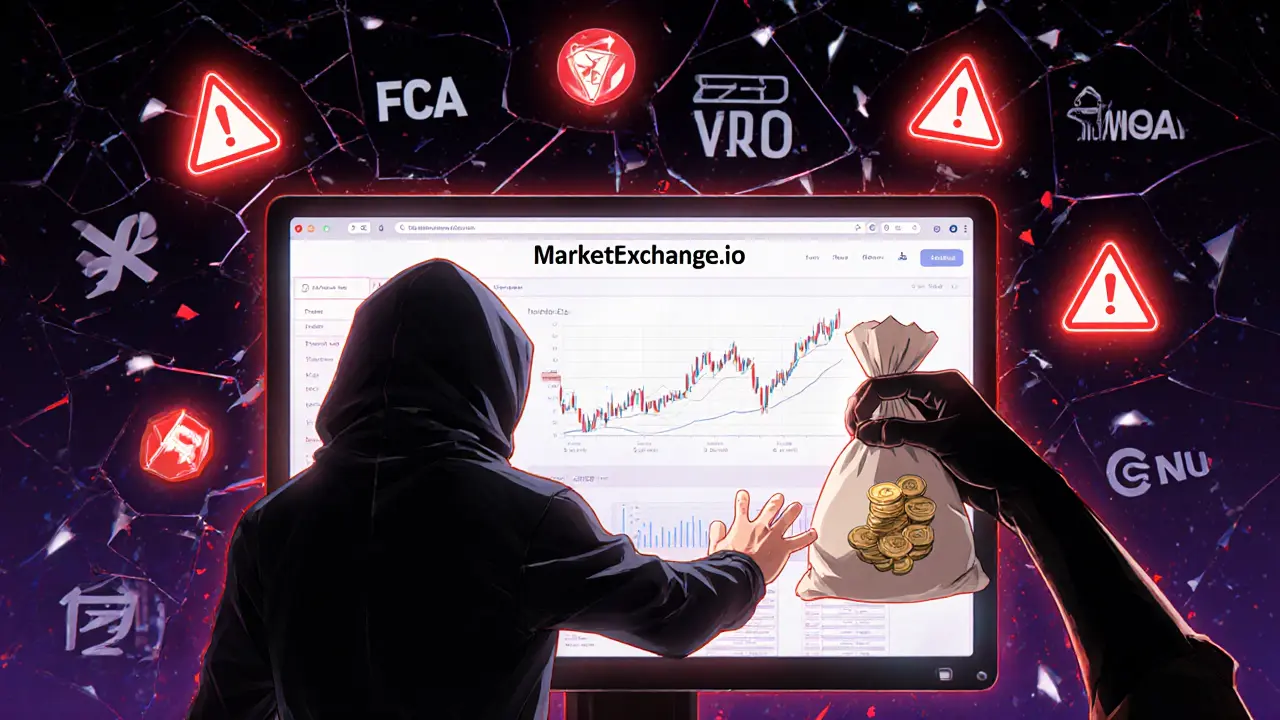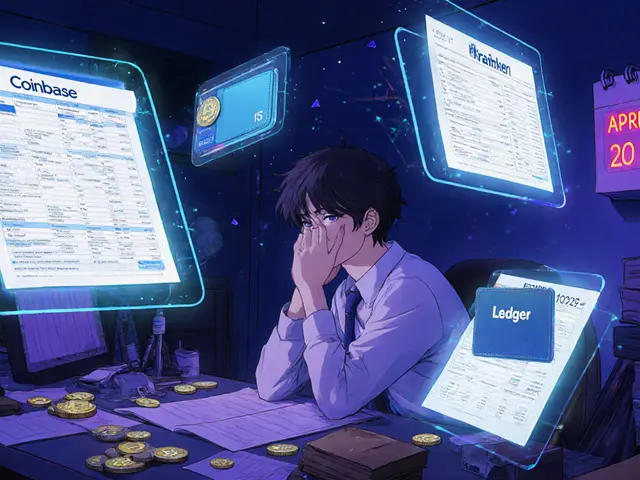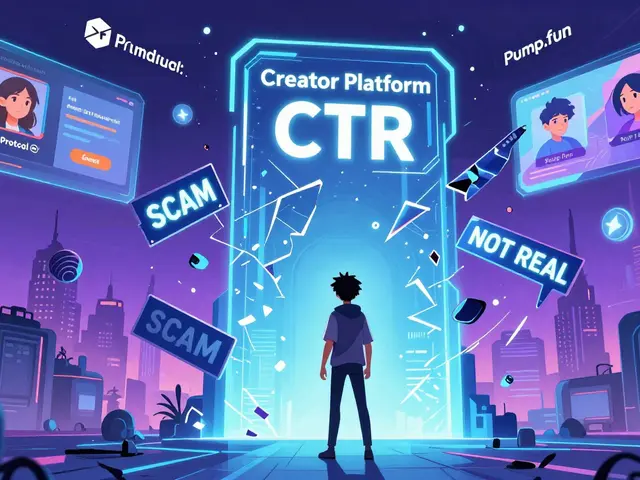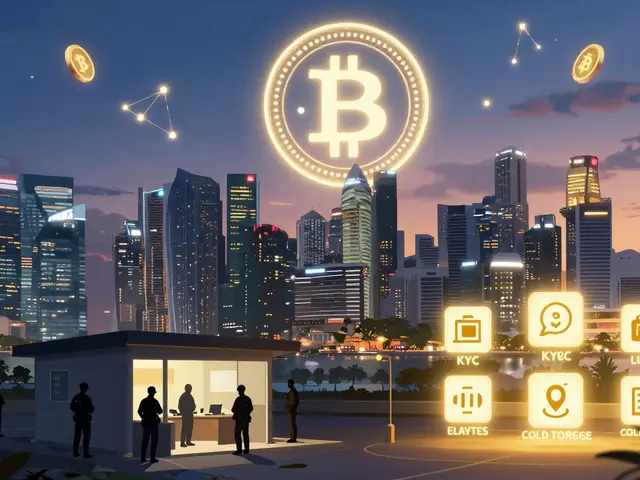If you're considering trading on MarketExchange, stop. Right now. This isn't a platform you want to touch. As of November 2025, MarketExchange.io is not a legitimate cryptocurrency exchange - it's a well-oiled scam with all the classic signs of a pump-and-dump operation designed to steal your money and vanish.
There are no verified user reviews on Trustpilot, no regulatory licenses, no security audits, and no real trading volume. The entire operation looks like it was built in a weekend using copy-pasted marketing lines from legitimate exchanges. Its website, marketexchange.io, runs on cheap shared hosting. That’s not how Coinbase, Kraken, or Binance operate. Those platforms invest millions in enterprise-grade infrastructure. MarketExchange? It doesn’t even have a phone number for customer support.
Zero Regulatory Presence - A Major Red Flag
Every legitimate crypto exchange today is registered with financial regulators. Coinbase holds 47 licenses across U.S. states and international jurisdictions. Kraken is registered as a Virtual Asset Service Provider (VASP) in 28 countries. Binance US operates under strict SEC oversight. MarketExchange.io? Zero. Nada. Nothing.
The U.S. Financial Crimes Enforcement Network (FinCEN), the UK’s Financial Conduct Authority (FCA), and the European Union’s MiCA framework all require exchanges to register and report. MarketExchange isn’t listed anywhere. Its domain was registered on February 17, 2025, through anonymous privacy services - a common tactic used by scam platforms that plan to shut down in under a year. Legitimate exchanges register domains for 5-10 years. MarketExchange? One-year term. That’s not a business. That’s a temporary trap.
No Transparency. No Proof. No Trust.
Legitimate exchanges publish their proof-of-reserves monthly. Kraken has done it since January 2023. Coinbase shows its insurance coverage through Lloyds of London - $255 million for customer assets. MarketExchange claims to have “advanced security” but gives no details. No audit reports. No cold wallet addresses. No blockchain verification.
They say they offer “transparent fees,” but you won’t find a single fee schedule on their site. Compare that to Binance: 0.1% maker, 0.1% taker. Coinbase Advanced Trade: 0.05%-0.60% based on trading volume. MarketExchange? Blank. No numbers. No breakdown. Just vague promises.
Trading Volume? Doesn’t Exist
MarketExchange claims to support TRX/BTC trading. But according to CoinGecko’s October 2025 data, the top 10 TRX/BTC pairs on Binance, Bybit, and OKX collectively trade $187 million per day. MarketExchange? Zero detectable on-chain activity. CryptoCompare’s exchange rankings require at least 90 days of audited volume to qualify. MarketExchange doesn’t even make the list - because it doesn’t exist as a real market.
It’s not just low volume. It’s no volume. The platform can’t execute real trades. Your deposits? They’re sitting in a wallet controlled by the operators - not in a liquidity pool. When you try to withdraw, you’ll hit walls.
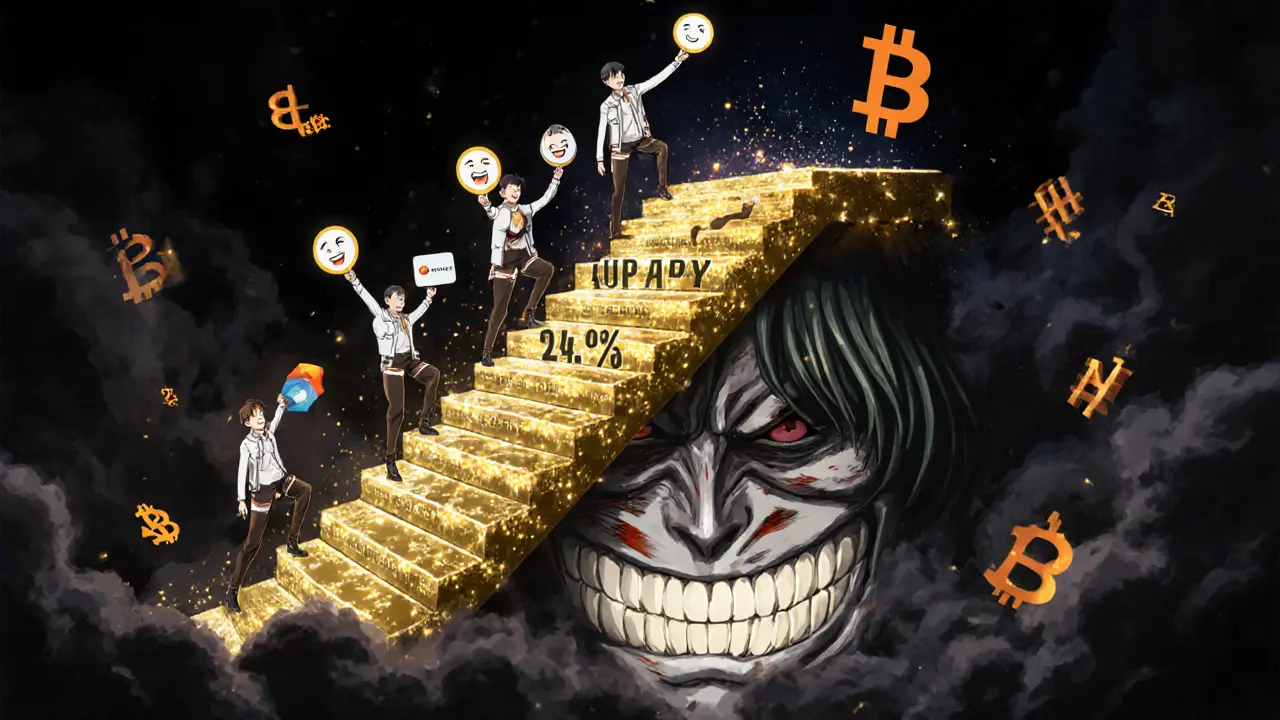
How the Scam Works: The Classic Trap
The pattern is predictable. You sign up. You deposit $100 in USDT. You see your balance jump to $120. You try to withdraw $120. It works. Small win. Feels real.
Then you deposit $500. You make $150 profit. You try to withdraw $650. Suddenly, your account is “flagged for AML review.” You’re told you need to pay a $186 “compliance fee” to unlock your funds. You pay it. The money disappears. The chatbot stops replying. Your account is frozen.
That’s not a glitch. That’s the plan. Reddit’s r/CryptoScams has 17 verified reports of this exact scam since March 2025. Users describe identical stories: small withdrawals first to build trust, then a fake compliance hurdle to steal the rest. The platform’s KYC process is laughably fast - approved in minutes. Legitimate exchanges take 2-3 days. Why? Because MarketExchange doesn’t care who you are. They just want your deposit.
Security? Barely There
Legitimate exchanges use mandatory two-factor authentication (2FA), multi-signature wallets, and regular penetration tests. Coinbase has 98.7% of its user accounts protected by 2FA. Kraken hires Cure53 for quarterly security audits. MarketExchange? No mention of 2FA requirements. No third-party audit reports. No public security policy.
Their website doesn’t even use HSTS (HTTP Strict Transport Security), a basic encryption protocol. That’s like locking your front door but leaving the back window wide open. And their customer support? Only automated chatbots. No email tickets. No phone line. No escalation path. That’s not customer service. That’s a dead end.
Staking? 24.7% APY? That’s a Red Flag
As of November 2025, MarketExchange added “staking” with a 24.7% annual return on USDT. That’s over eight times higher than Coinbase’s 2.97% APY. It’s 12 times higher than Kraken’s 2.05%. And it’s impossible.
Staking returns are tied to real blockchain network yields. Ethereum staking pays around 3-4%. Solana around 5-7%. Anything above 10% is a red flag. 24.7%? That’s not staking. That’s a Ponzi scheme using new deposits to pay old users - until the money runs out.
Chainalysis’ Q3 2025 Fraud Report shows fake staking offers are the fastest-growing scam tactic in crypto. MarketExchange is right on trend.
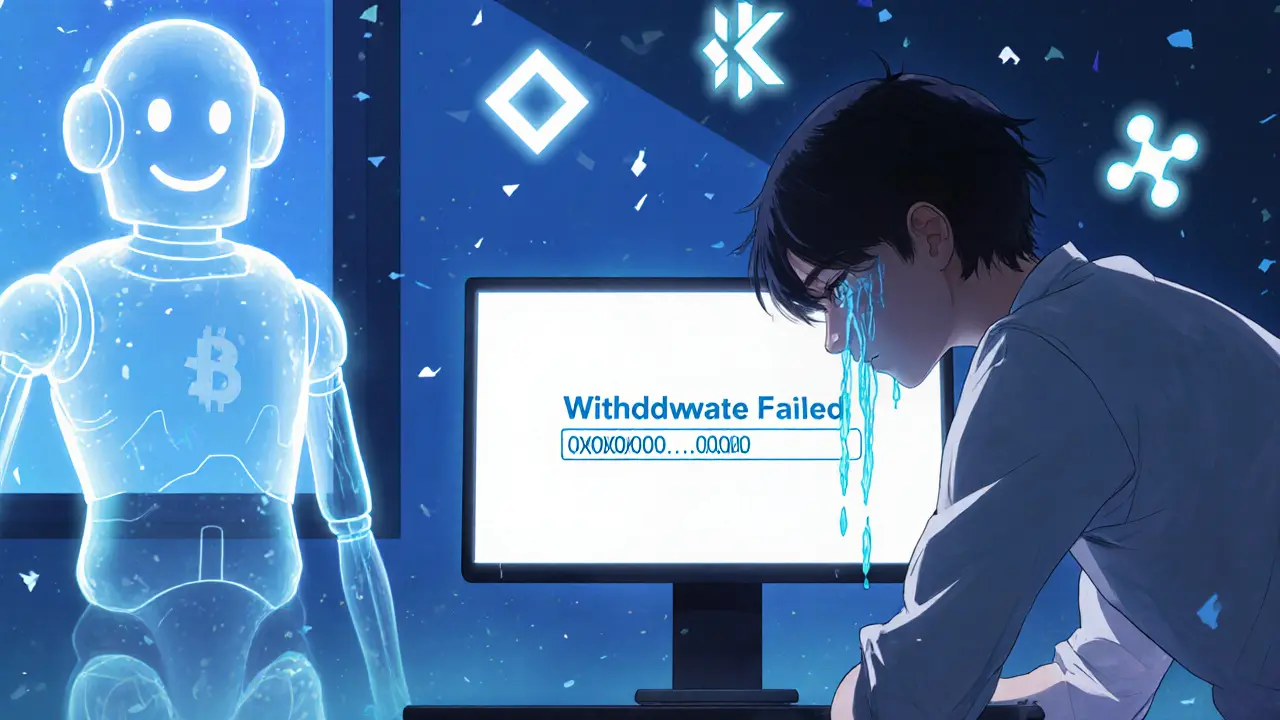
Why This Matters - Real Consequences
People lose life savings on platforms like this. Not because they’re dumb. Because the scam looks real. The website is polished. The interface mimics Binance. The testimonials? Fake. The “success stories”? AI-generated.
There’s no recourse. No regulator to report to. No chargeback. Once your crypto is gone, it’s gone forever. Blockchain transactions are irreversible. And MarketExchange doesn’t even have a physical address. No company registration. No legal entity. Just a website and a wallet.
What to Do Instead
Stick to exchanges with a proven track record:
- Coinbase: Regulated, insured, user-friendly. Best for beginners.
- Kraken: Strong security, monthly proof-of-reserves, global compliance.
- Binance: Highest liquidity, lowest fees, advanced tools - but avoid Binance.US if you’re in the U.S.
- Bybit: Great for derivatives, transparent volume, strong track record.
All of them publish regulatory licenses, audit reports, and detailed fee schedules. All of them have real customer support teams. All of them have been around for years.
MarketExchange? It was created in February 2025. It will be gone by February 2026. Don’t be the last person to deposit.
Final Verdict
MarketExchange.io is not a crypto exchange. It’s a digital robbery operation. It has none of the attributes of a legitimate platform: no regulation, no transparency, no security, no volume, no support, and no future.
If you’ve already deposited money - stop trying to withdraw more. Document everything. Report it to your local financial crimes unit. But understand: recovery is nearly impossible. The money is already gone.
Don’t let greed or FOMO blind you. If it sounds too good to be true - especially in crypto - it is. MarketExchange is a textbook example. Walk away. Save your coins. Trust only what’s proven.
Is MarketExchange.io a legitimate crypto exchange?
No. MarketExchange.io is not a legitimate exchange. It has no regulatory licenses, no proof-of-reserves, no independent audits, and zero trading volume on verified platforms like CoinGecko or CryptoCompare. It’s classified as a high-risk scam by blockchain security firms like CipherBlade and INDSPN.org.
Can I trust MarketExchange with my crypto?
Absolutely not. MarketExchange uses classic scam tactics: small initial withdrawals to build trust, then blocking larger withdrawals with fake compliance fees. Once you deposit, your funds are controlled by the operators. There is no insurance, no cold storage, and no way to recover your assets if they disappear.
Why does MarketExchange offer 24.7% APY on staking?
That return is impossible and a major red flag. Legitimate staking platforms like Coinbase offer around 2.97% on USDT. Returns above 10% are unsustainable and typically indicate a Ponzi scheme - where new deposits pay earlier users. MarketExchange’s 24.7% APY is designed to lure in large deposits before the platform shuts down.
Does MarketExchange have customer support?
MarketExchange only offers automated chatbots with no phone support, email tickets, or escalation paths. Legitimate exchanges provide multiple verified support channels. The absence of real human support is a key indicator of fraud.
What should I do if I already deposited money on MarketExchange?
Stop sending more money. Document all transactions, screenshots, and messages. Report the platform to your local financial crimes authority and to Chainalysis’ fraud reporting portal. Unfortunately, recovering funds is extremely unlikely - the operators control the wallets and have no legal accountability. Treat it as a loss and move on.
How can I spot a fake crypto exchange?
Look for these signs: no regulatory licenses, no published fee schedules, no proof-of-reserves, no real trading volume, high staking returns (over 10%), no phone support, and a domain registered for only one year. Check CoinGecko or CoinMarketCap - if it’s not listed, avoid it. Legitimate exchanges are transparent by design.

